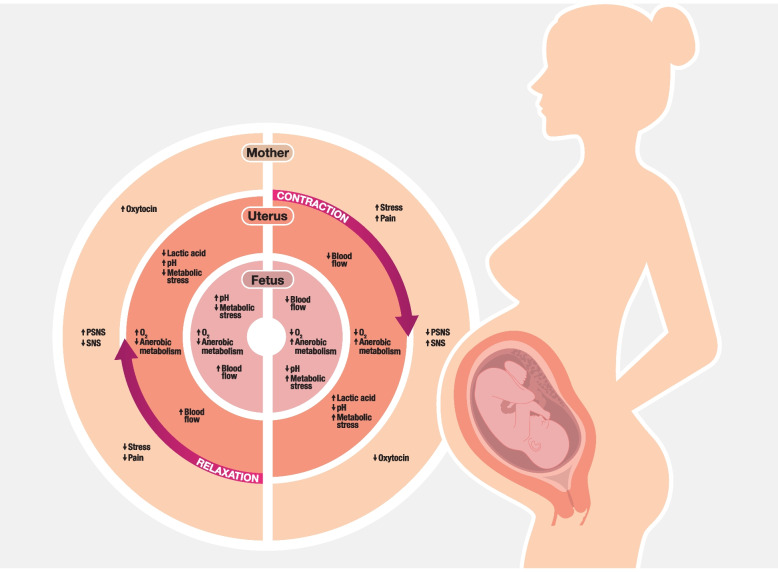Fig. 1.
Uterine contraction and relaxation: metabolic, autonomic and haemodynamic effects for mother, uterus, and fetus. Note: Equal lengths of contraction and relaxation are for illustration only. In labour the period of contraction is relatively shorter, with a relatively longer period of relaxation that allows full replenishment of blood supply to the uterus and fetus, as shown in the figure. As labour progresses, contractions become stronger and more frequent with relatively shorter periods of relaxation in between. Infusions of synthetic oxytocin cause stronger and more frequent contractions, which further shortens the relative time for replenishment in uterine tissues. This may increase maternal pain and stress and reduce fetal blood flow. In this way, administration of synthetic oxytocin may exaggerate maternal metabolic and autonomic consequences and fetal blood flow reductions induced by the contractions of physiological birth, as illustrated. Abbreviations: O2: oxygen; pH: measure of acidity; PSNS: parasympathetic nervous system; SNS: sympathetic nervous system (Figure 1 copyright S Buckley and K Uvnäs-Moberg, 2023)

